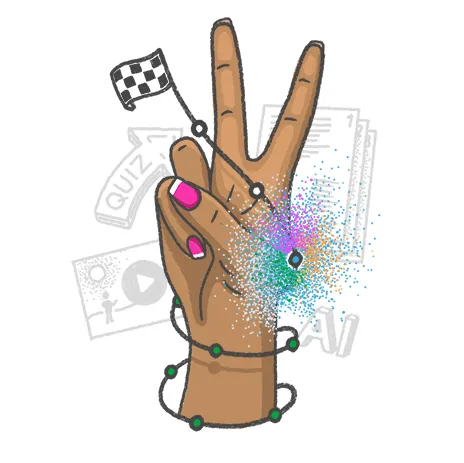1. Failing to prepare for the first day
The first day sets the tone for the entire employee experience. That initial excitement from recruitment should carry into day one – or longer. This means having all the practicalities in place and a clear plan for what the day will look like.Make sure the desk, login details, phone or computer are ready. Send a friendly reminder to the hiring manager the day before, and an overview email to the new hire so they know what to expect.Prioritize personal connection over policies. Focus on meet-and-greet moments and what the employee needs to feel confident and welcomed. End the day with appreciation – and a sneak peek at what the rest of the week holds.
2. Skipping preboarding (the time between signing and day one)
One of the most overlooked onboarding mistakes is wasting the valuable time between contract signing and the first day. Why let that energy fade?Instead of spending the first day filling out forms or setting up tools, let new hires handle the admin upfront – at their convenience. Modern onboarding tools allow employees to access a personal dashboard before their start date. Here, they can input details, read policies, watch intro videos, or explore the org chart.According to research, employees who go through a structured onboarding process reach productivity up to 30% faster than those who don’t. And more than 80% of high-performing companies start onboarding before day one. Use that time to build connection and clarity – not paperwork piles.
3. Not setting clear goals and expectations
One of the top reasons people leave a job within six months is unclear expectations. In fact, Gallup found that only about half of employees know what’s expected of them at work.Especially for younger generations, support and goal alignment are key. Among Millennials, 72% feel more engaged when managers help them set performance goals.That’s why ongoing check-ins matter. Spread your onboarding journey over 3–6 months with regular one-on-ones, performance discussions, and collaborative tasks. Tools like Learnifier make it easy to create structured onboarding flows where employees complete activities, access knowledge, and get to know tools – at their own pace. HR and managers can follow progress and stay engaged throughout the journey.
4. Underestimating the power of employee engagement
New employees should be treated like customers – you want them to feel excited, included, and supported.A Deloitte report recommends building early engagement through buddy programs, feedback loops, and personal development plans. For example, you might provide a 90-day roadmap, include inspiring video content, and offer virtual meet-the-team moments if you’re working across multiple locations.Check-ins, surveys, and small wins build momentum. In short: onboarding is the first impression of your culture – make it count.
5. Not automating where it counts
Hiring is costly – and failed hires even more so. According to Bersin/Deloitte, the average cost per hire is $4,000 or more. That’s why you want onboarding to be both effective and efficient.Instead of spending hours repeating the same processes, use automation to free up time for human interaction. With modern HR tools, you can:Automate emails, training modules and task remindersDistribute content in the right order and at the right timeSet up trigger-based actions for both new hires and managersThis saves time, reduces mistakes, and ensures a consistent experience. But remember – don’t automate everything. People love people. Automation should support – not replace – personal conversations, coaching and care.The key to better onboarding? Balance.Successful onboarding is all about finding the sweet spot between structure and flexibility, automation and personalization, digital tools and human touch. By avoiding these common mistakes, you create a smoother experience for everyone involved – and increase the chances that your new hire will stay, grow, and thrive.





.webp)



.webp)








